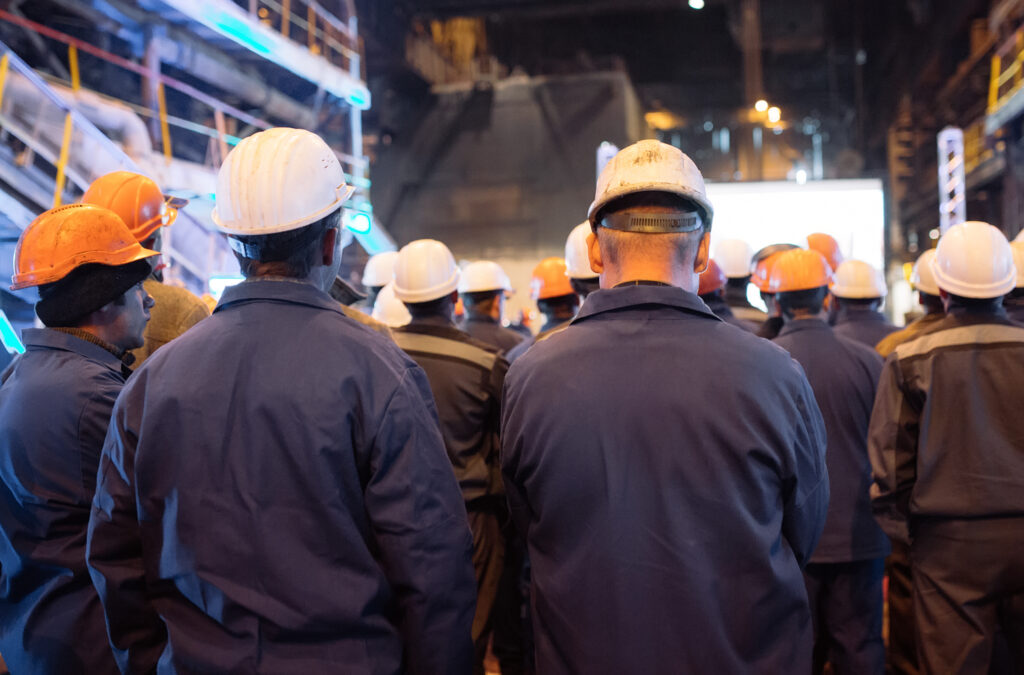Increased labor costs are potentially insurmountable and uncontrollable challenges facing the automobile industry for the government mandates in wealthy countries for lower emission EV’s.
The UAW strike that began September 14th by 146,000 UAW union members seeking a 46 percent pay raise, and a 32-hour week with 40 hours of pay, and restoration of traditional pensions, will most likely have one of two outcomes, both of which may perpetuate the death spiral for the automobile industry.
- Increased cost of American manufacturing which will further increase the cost of EV’s that are already unaffordable to most, and/or,
- Increasing the cost of U.S. manufacturing, may result in more offshore manufacturing needed which may decimate U.S. stateside manufacturing.
The UAW members are not fazed by death spiral already mandated for the automobile industry. The few healthy and wealthy countries of the United States of America, Germany, the UK, and Australia representing 6 percent of the world’s population (505 million vs 7.8 billion) are mandating social changes to achieve zero emissions via EV’s that may be fueling (no pun intended) a death spiral for the automobile industry.
Simply put, in those healthy and wealthy countries, every person, animal, or anything that causes emissions to harmfully rise could vanish off the face of the earth; or even die off, and global emissions will still explode in the coming years and decades ahead over the population and economic growth of China, India, Indonesia, Japan, Vietnam, and Africa.
The UAW wants a more lucrative package and are not concerned with the “pieces of the EV puzzle” that may be the formula for an automobile industry death spiral:
- Extremely limited supply chain for the lithium to make current technology EV batteries.
- Lack of sufficient number of buyers, outside the elite profile of existing EV owners
- Shortage and inflation for all the material supplies to make vehicles.
- Due to EV battery fire potentials, questionable means of transporting EV’s from foreign manufacturers to the USA consumers.
- Concern about renewable electricity being able to charge EV batteries.
- The Governments’ lack of ethical, moral, and social responsibilities, by encouraging the exploitations of people with yellow, brown, and black skin that are mining for exotic minerals and metals in poorer developing countries to support the green movement in wealthy countries.
Where are the batteries?
The UAW race is on for a better contract, while the race is on to produce more lithium in the United States as the supply chain for the major component of EV batteries, lithium, is already being compromised internationally. The following international dark clouds on the lithium supply chain may be a prelude to an American rejection of strip mining in the most environmentally regulated and controlled communities in the world:
The Chilean Supreme Court stopped the mining of lithium in Salar de Atacama, Chile – a huge chunk of terrain that holds 55 percent of the world’s known deposits of lithium.
- Initiatives around the world to open mines and ore processing plants have caused a public uproar as environmentalists and the local population are fearful about the impact on nature and people’s livelihoods.
- The European Chemicals Agency’s (ECHA) risk assessment committee is aiming at labelling three lithium compounds as dangerous for human health.
Where are the buyers?
Fair wages are number one to UAW, while EV’s are already unaffordable to most. The current EV ownership profiles are reflected in the oligarchic elite that are highly educated, highly compensated, multi-car families, with low mileage requirements for the families second car, are dramatically different from most vehicle owners that are single-car owners, not highly educated, nor highly compensated. Mandating a change to EV ownership and further austerity may face a rebellion from those that need transportation.
Where is the transportation from the foreign manufacturers to the car dealers?
Increasing production costs in the U.S. may increase manufacturing outside the borders of America. In 2019, China, Japan, India, Germany, and South Korea were manufactured more than 50 million vehicles compared to the 11 million that were manufactured in the USA
Bringing those foreign built cars to America may be an insurmountable insurance problem. The Felicity Ace, a 650-foot-long cargo ship carrying hundreds of millions of dollars’ worth of luxury cars sunk in March 2022. The salvage crew working on the burning ship said electric-vehicle batteries were part of the reason it was still aflame after several days. The estimated market value of the Felicity Ace was $24.5 million, while the total value of the 3965 vehicles was over $500 million.
With potential fires from the EV batteries in vehicles, who is going to take the insurance responsibility for their safe passage from the foreign manufacturers to American ports, the cargo ships, or the manufacturers?
Where are the vehicle materials?
Most people, as well as UAW members, do not know that crude oil is useless unless it can be manufactured into something usable. All the material for the EV, from electronics, plastics, glass, leather, tires, etc. are all made from the oil derivatives manufactured from crude oil.
Today’s Environmental, Social and Governance (ESG) divesting in fossil fuels are all the rage to divest in all fossil fuels. ESG is working but will result in shortages and inflation as the new norm as society’s demands for the products from crude oil are exceeding the supply from the diminishing number of manufacturers.
There were almost 700 oil refineriesin the world as of January 2020, but as a result on continuous over regulations, permitting delays, aging equipment, over the next five years 20 percent of the them are projected to close. That is a whopping 140 manufacturers that will close. Shortages and inflation in perpetuity may be the new norm as society’s demands for the products manufactured from crude oil are continually exceeding the supply from the diminishing number of manufacturers.
Where is the electricity?
The government’s zest for zero emissions electricity in favor of intermittent electricity from breezes and sunshine are eliminating coal fired and natural gas power plants that have been generating continuous uninterruptable electricity.
We have all read about the concerns toward “grid stability” to be able to charge those EV batteries. Well, the UK may have given the world a heads-up on why electricity rates may be rising in perpetuity.
In the UK, their concerns for grid stability with fewer and fewer continuous uninterruptible power generations facilities has implemented regulations that went into force in June 2022, that restrict charging times.
In the UK, new chargers in the home and workplace now automatically switch off in peak times to avoid potential blackouts. New UK chargers are pre-set to not function during 9-hours of peak loads, from 8am to 11am (3-hours), and 4pm to 10pm (6-hours).
In addition, all home installed UK electric vehicle chargers are required to be separately metered and send this information to a Smart meter data communications network. Potentially, this UK legislation allows the electricity used for charging EVs to be charged and taxed at a higher rate than domestic electricity. Obviously, the EV electricity users are the ones that will be paying to upgrade and maintain the grid.
Where is the ethical, moral, and social responsibility for the lithium supplies to meet the mandate toward EV’s?
The Pulitzer Prize nominated book “Clean Energy Exploitations – Helping Citizens Understand the Environmental and Humanity Abuses That Support Clean Energy, does an excellent job of discussing the lack of transparency to the environmental degradation and humanity atrocities occurring in developing countries mining for those exotic minerals and metals to support the “green” movement.
The subsidies to purchase EV’s are financial incentives to encourage further exploitations of yellow, brown, and black skin residents in developing countries. Are those subsidies ethical, moral, and socially responsible to those being exploited?
In summary, the UAW strikers want more compensation and are not influenced by the passion of the few wealthy countries to achieve zero emissions at any cost, will face major supply chain issues of lithium and all body parts, affordability, safety from spontaneous fires, availability and affordability of electricity from breezes and sunshine, and the ethical challenges that are exploiting folks in poorer countries, just for the elites to drive an EV manufactured by the few that survive the government mandated death spiral.





